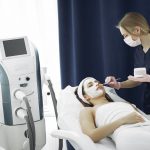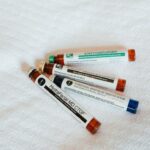In the world of skincare and beauty, the quest for perfection often comes with a hefty price tag. However, recent advancements in aesthetic facial services are changing this narrative. Today, we explore the growing trend of affordable and effective treatments like chemical peels and medical-grade facials, which are making waves in places like South Florida.
Chemical Peels: A Game Changer In Skincare
Chemical peels have rapidly become a cornerstone in aesthetic skincare, offering a transformative solution for various skin concerns. These peels, which involve the application of a chemical solution to the skin, work by exfoliating the upper layers, allowing damaged and aged skin to peel away. This process reveals a fresher, more vibrant layer beneath. Let’s delve deeper into the types, benefits, and considerations of chemical peels.
Types Of Chemical Peels
Chemical peels are categorized based on their depth of skin penetration: light, medium, and deep.
Light Peels: These are the mildest form of chemical peels. Using mild acids like alpha-hydroxy acid (AHA), light peels gently exfoliate the skin, targeting only the outermost layer. They are ideal for treating fine lines, acne, dryness, and minor skin discoloration. Light peels require little to no downtime, making them a convenient option for those with busy schedules.
- Medium Peels: Medium peels penetrate the outer and middle layers of the skin. They often utilize trichloroacetic acid (TCA) or glycolic acid for a deeper exfoliation. These peels are more effective for treating age spots, wrinkles, and moderate skin discoloration. They can also smooth rough skin and treat some precancerous skin growths. Medium peels may require some downtime for recovery, usually a few days to a week.
- Deep Peels: The most intensive type, deep peels fully penetrate the middle layer of the skin for profound resurfacing. Phenol acid is commonly used in deep peels. They can address more severe wrinkles, age spots, and even shallow scars. Due to their intensity, deep peels require significant recovery time and can result in swelling, redness, and peeling.
Benefits Of Chemical Peels
Chemical peels offer a range of benefits, including:
- Improved texture and tone of the skin
- Reduction of fine lines and wrinkles
- Treatment of certain types of acne
- Diminishing the appearance of mild scarring
- Lightening of age spots, freckles, and dark patches (melasma)
- Enhanced absorption of skincare products post-treatment
- Considerations and Aftercare
While chemical peels are generally safe, it is crucial to consider certain factors:
- Skin type and sensitivity
- History of scarring
- Tendency for pigmentation changes
- Consultation with a skincare professional for the right type of peel
Post-peel care is essential for healing and maximizing benefits. This includes avoiding direct sunlight, using gentle skincare products, and maintaining hydration of the skin.
Medical-Grade Facials: Beyond The Basics
Medical-grade facials stand apart from traditional spa facials by incorporating clinically proven methods and high-quality, pharmaceutical-grade products. These facials are tailored to address specific skin concerns and conditions, delivering results that are both visible and long-lasting. Let us explore the components, benefits, and types of medical-grade facials.
Components Of Medical-Grade Facials
Medical-grade facials typically involve a combination of the following elements:
- Advanced Exfoliation: This often includes methods like microdermabrasion or chemical peels, utilizing stronger concentrations than found in over-the-counter products. It helps in removing dead skin cells, promoting cell turnover, and revealing healthier skin layers.
- Deep Cleansing: This step goes beyond surface cleaning, targeting pores to remove impurities and excess oil, which can lead to acne and dullness.
- Customized Serums And Masks: Based on individual skin analysis, dermatologically tested serums and masks are applied. These products contain higher concentrations of active ingredients, like hyaluronic acid, antioxidants, peptides, and vitamins, addressing specific skin needs.
- LED Light Therapy: Some facials include LED light therapy, which uses varying wavelengths of light to treat skin issues, such as redness, acne, and signs of aging. The best LED face masks work similarly by delivering light deep into skin cells, providing comprehensive care for your skin.
- Specialized Techniques: Techniques like dermaplaning or microneedling wellington might be included to enhance results, depending on the skin’s condition and the desired outcome.
Benefits Of Medical-Grade Facials
The benefits of these advanced facials are numerous:
- Tailored treatment plans for specific skin issues
- Use of high-quality, potent ingredients
- Visible improvement in skin texture and tone
- Reduction in signs of aging, like wrinkles and fine lines
- Effective treatment for acne and hyperpigmentation
- Improved skin hydration and nourishment
Types Of Medical-Grade Facials
There are various types of medical-grade facials available, each targeting different skin concerns:
- Hydrating Facials: For dry or dehydrated skin, using products rich in hydrating agents.
- Anti-Aging Facials: Focusing on reducing the signs of aging, improving skin elasticity, and promoting collagen production.
- Brightening Facials: Aimed at treating uneven skin tone and hyperpigmentation.
- Acne-Targeted Facials: Designed to treat and prevent acne breakouts, reduce oiliness, and clear pores.
The realm of aesthetic facial services is evolving, making high-quality, effective treatments like chemical peels and medical-grade facials more accessible than ever before. With experts like Vanessa at “Glow Up,” located in the heart of South Florida, achieving flawless skin is no longer an unattainable dream. It is time to embrace the new era of skincare that promises both excellence and affordability.







